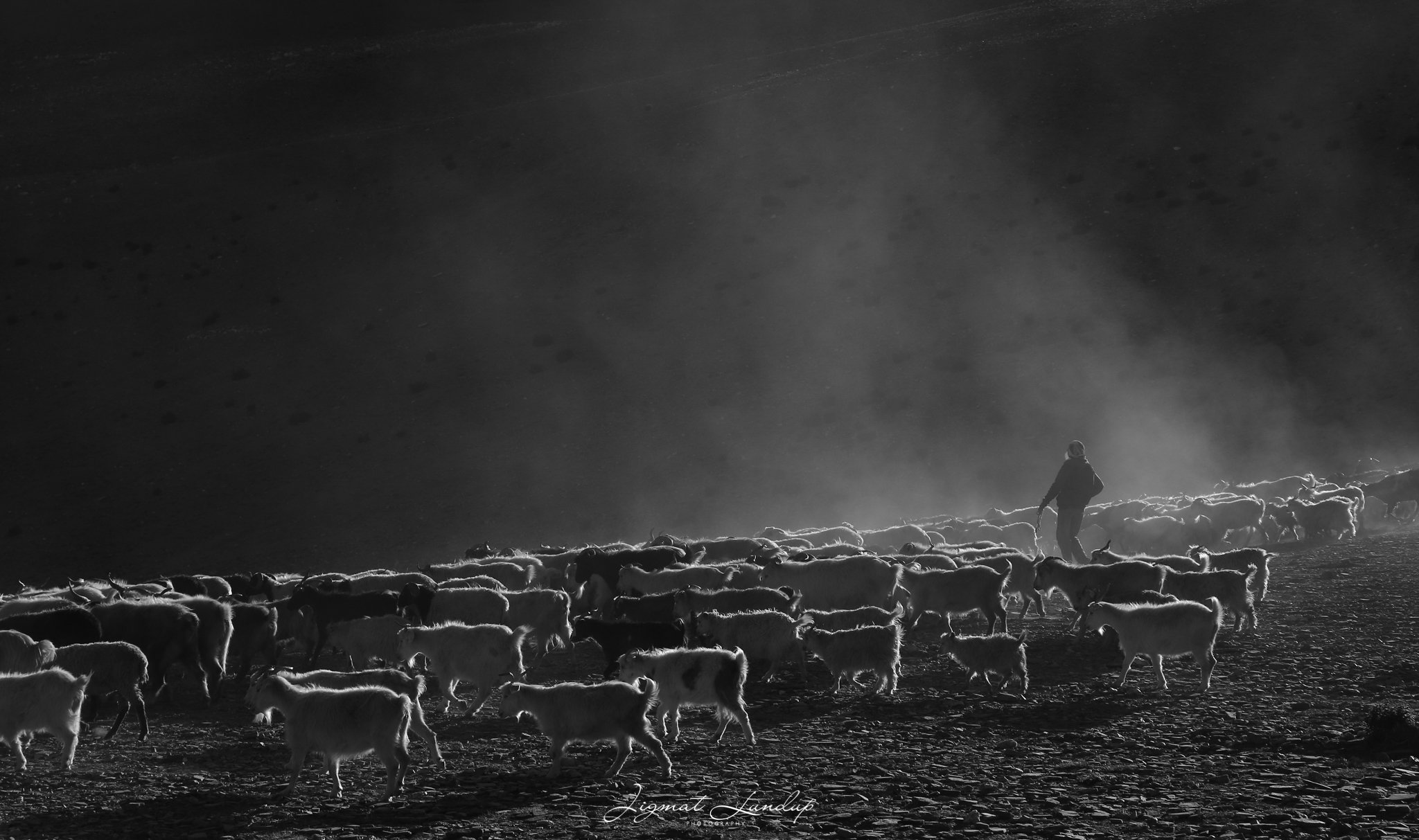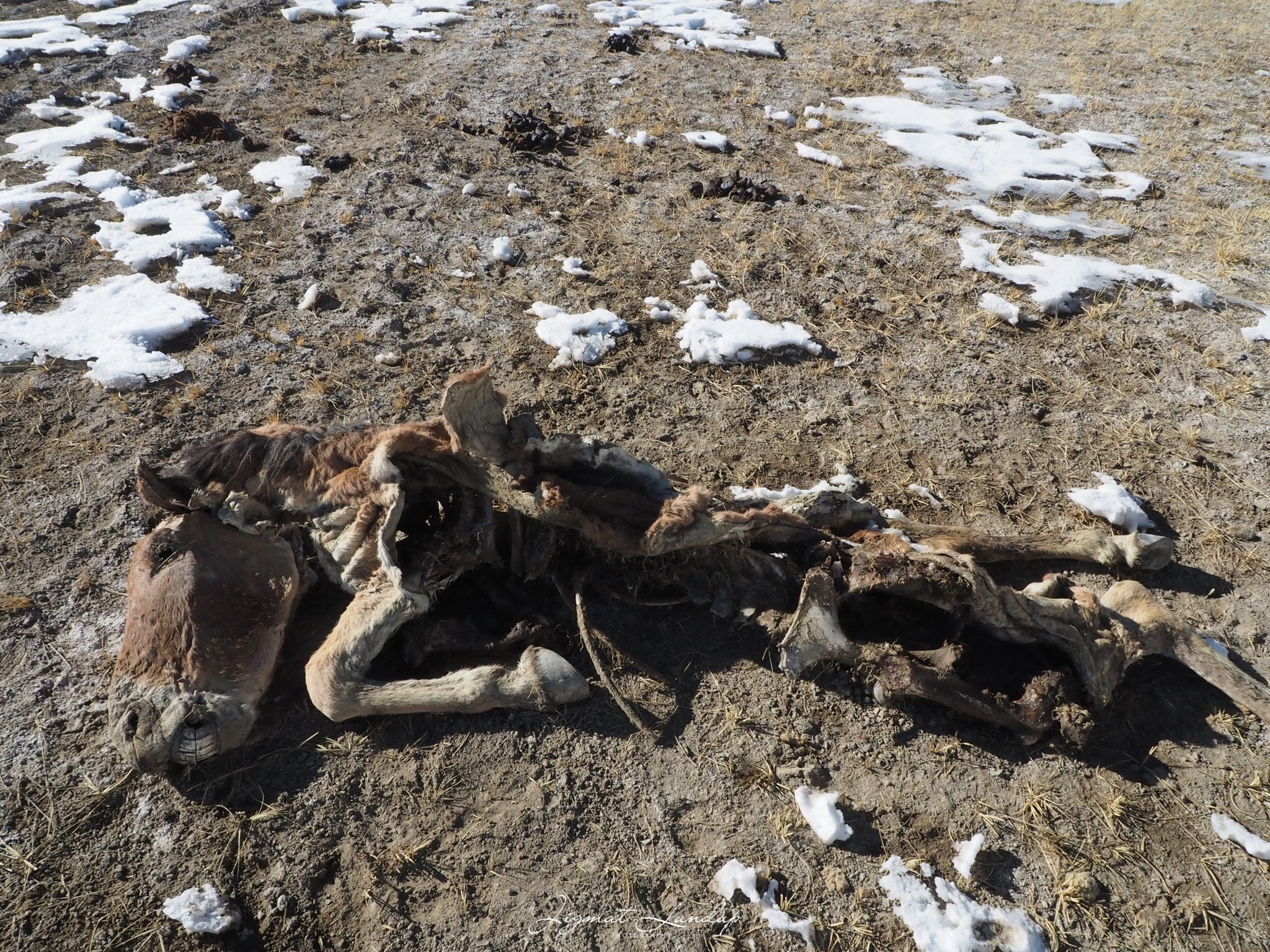
From the Rupsho Plateau
By Jigmat Lundup, 2022
I met Nawang Tharchen of Samad Rokchen about a year ago, during the fall of 2021. Not too far from the village, one can see the beautiful Tso Kar, a salt lake in the Rupshu Plateau of Ladakh. This area is home to nomadic people who travel around in search of pastures to feed their animals, mainly yaks, sheep, and goats. Their movements depend on the availability of grass. Every year, nomads are going to Startsa-phu and Changri. Then, in the 5th month of the Tibetan calendar (roughly in June/July), they stop at Rokchen,Rogchun, Mentzur and Dipring where they extract pashmina. Then they continue their journey toward Rena and eventually come back to Ponggo-Nuggu. The nomad’s life and movements on the plateau is following the rhythm of the seasons. The nomads spend a lot of time alone, away from their relatives, but once a year, they all gather in Samad Rokchen, during Losar, the New Year.
Today, many people from the area spend the winter in Leh, especially younger generations. But Nawang Tharchen, a man in his early 70s, spends all his time around in Samad Rokchen. He is practicing meditation while his younger brother is traveling with their animals. Nawang Tharchen shared some interesting things about Tso Kar. In the past, when the nomads would go to Startsa-phu, they would do so only when the lake is frozen, to cut the distance. But after some excavation and exploration work done by the government of India about four decades ago, the lake stopped freezing fully. Today one would never dare to walk safely across the lake in winter as people did in the past when the lake could be frozen for many months. After the excavation work, the shade of the water also started to change, and a reddish hue would sometimes replace its usual blueish color.
In the land of the nomad, one is at the mercy of the weather. Sometimes, the weather prevents the nomads from moving. This was the case the prior winter when they could not go to Zara phu due to early snowfall. Sometimes, the weather can bring fatalities. In 1998, heavy snowfall killed about 90% of the livestock around Tso Kar. Large animals such as yaks can be seen everywhere, lying dead on the ground. Nawang Tharchen used to have 25 yaks and only 3 could survive. Of his flock of 200 sheep and goats, about only 10 survived. Today, there are other issues related to the weather. For years now, the nomads have been craving snowfall. On many occasions, they have invited lamas and Rinpoche to do rituals to bring more snowfall and rainfall. But nothing is happening. This is an important issue because less snowfall means less grass to feed the livestock on the pastures. This also affects the lake. Nawang Tharchen saw Tso Kar shrinking during his life and he fears that one day it will become totally dry. Why is there less snowfall today? According to Nawang Tharchen this is because the lha and lhu are angry due to people’s greediness and their growing lack of respect for these deities. This is what led us to this situation.





